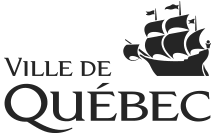
Menu
Quick Access
Find: an activity | an accommodation | a restaurant | a store
 Credit: La Citadelle de Québec
Credit: La Citadelle de Québec
Canada 150
Canadian Attractions in Québec City
Discover some of Canada’s most historical sites
Many of Québec City’s parks and historic sites are under federal jurisdiction. Don’t miss the chance to visit these attractions during the 150th anniversary of Canadian Confederation in 2017.
 Credit: Parcs Canada
Credit: Parcs Canada
Free Admission to National Historic Sites
Admission to Parks Canada places will be free in 2017. In Québec City, visitors will have free access to a number of historic sites, including Artillery Park and the Fortifications of Québec, defensive structures once used to protect the former colony. Visitors to Saint-Louis Forts and Châteaux will have the chance to explore an archeological crypt—the remains of Château St. Louis that lay beneath Dufferin Terrace. At Cartier-Brébeuf National Historic Site, there’s an outdoor exhibit on Jacques Cartier’s overwinter stay from 1535 to 1536. Canada's National Historic Sites will be celebrating their 100th anniversary in 2017.
Access to Cap Tourmente National Wildlife Area, a major Canadian bird-watching site, is also free in 2017.
 Credit: Olivier Lavigne-Ortiz
Credit: Olivier Lavigne-Ortiz
The Citadelle and the Royal 22e Régiment
Major national historic site, the Citadelle is the heart of the defence system that protected Québec City. Authentic garrison, the impressive fortress is the home of the Royal 22e Regiment, the unique French-speaking infantry within the regular Forces, since 1920. Besides the daily changing of the guard during summer, one can visit the residence of the governor general, a patrimonial attraction as well as the Musée Royal 22e Régiment. An exhibition dedicated to the battle of Vimy ridge, an important milestone in the history of Canada, will be presented from April 6th, 2017.

Plains of Abraham
Battlefields Park was created in 1908 on the Plains of Abraham, where French troops were defeated at the hands of the English in 1759. This majestic urban park was Canada’s first national historic park and is operated by the National Battlefields Commission. Visitors can relive the past at “Battles: 1759–1760,” an immersive exhibition that puts you at the front lines at this crucial point in history, explore the Martello Towers that were part of the British military’s defence system, or hop on board the Abraham Bus for some highlights from the history of the Plains.
 Credit: Château Frontenac
Credit: Château Frontenac
Fairmont Le Château Frontenac and Dufferin Terrace
Fairmont Le Château Frontenac is a Québec City icon and is said to be the world’s most photographed hotel. William Van Horne, president of the Canadian Pacific Railway, was one of the driving forces behind its construction. The luxury hotel is bordered by the Dufferin Terrace, a federal site owned by Parks Canada, first built in 1838. An extension proposed by Lord Dufferin in the 1870s extended the terrace and added quaint kiosks.
 Credit: Musée naval de Québec
Credit: Musée naval de Québec
Naval Museum of Québec
This summer the Naval Museum of Québec invites you to dive into the history of World War II. The extensively restored HMS Jeffy Jan II—also known as Churchill’s Yacht—will be on display in Québec City as the centrepiece of the exhibition. The small yacht is the last naval witness to the Québec wartime conferences of 1943 and 1944. Visitors to the exhibit will also have a rare chance to view the Torch of Victory, a symbol of the Canadian contribution to the war effort that was recently traced back to Chartwell Manor, Churchill’s country estate. The Héritiers des Guerres (Heirs of War) exhibit shines a light on the lives of little‑known soldiers who fought in the Second World War.

Canadian Legacy
Codex Populi, a sculpture commemorating the Quebec Conference that led to Canadian Confederation, will be installed at Québec City’s town hall. The building itself was designated a national historic site by Canada’s federal government in 1984. The sculpture, by artist Ludovic Boney, will be installed near Côte de la Fabrique. At 23 metres in length, the angled flagpole will have 9,520 cursive markings beaded onto 25 necklaces that dangle at one end. The cursive beads are meant to symbolize the founding political decisions taken during the Quebec Conference. The inauguration will take place on July 3, 2017.












